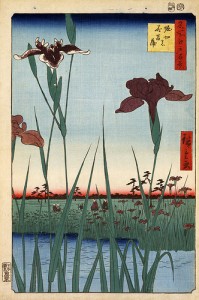Do you have an idea which “has high promise of improving rural development, improving nutrition, improving access to clean water, or having a significant impact on water management”? You do? It better involve the use of agrobiodiversity. Anyway, Nestlé would like to hear from you.
Nibbles: Urban bees, Borlaug, Cotton, Income, Mammals, Human disease, Caribou, Chestnut, IRRI
- There are 227 bee species in New York City. Damn! But not enough known about the work they (and other pollinators) do in natural ecosystems, alas.
- Borlaug home to be National Historic Site?
- Archaeobotanist tackles Old World cotton.
- FAO suggests ways that small farmers can earn more. Various agrobiodiversity options.
- About 400 new mammal species discovered since 1993 (not 2005 as in the NY Times piece). Almost a 10% increase. Incredible. Who knew.
- But how many of them will give you nasty diseases?
- The caribou wont, I don’t think. And by the way, its recent decline is cyclical, so chill.
- Saving the American chestnut through sex. Via the new NWFP Digest.
- “The best thing IRRI can do for rice is to close down and give the seeds it has collected back to the farmers.” Yikes, easy, tiger! Via.
Tri-Societies meeting programme revealed
The programme for the ASA-CSSA-SSSA International Annual Meetings in November is up. The genetic resources sessions look very solid, as ever. And the prestigious Calvin Sperling Memorial Lecture is to be given by our friend, colleague and occasional contributor Robert Hijmans on a topic we’ve blogged about often here, climate change and agrobiodiversity.
Nibbles: Dogs squared, Afghanistan’s poppies, Rice at IRRI, Book on sapodilla chicle in Mexico, Opuntia, Trees
- DNA survey of African village dogs reveals as much diversity as in East Asian village dogs, undermines current ideas about where domestication took place.
- Fossil doubles age of dog domestication.
- “When children felt like buying candy, they ran into their father’s fields and returned with a few grams of opium folded inside a leaf.”
- “The rice, a traditional variety called kintoman, came from my grandfather’s farm. It had an inviting aroma, tasty, puffy and sweet. Unfortunately, it is rarely planted today.”
- “An era of synthetic gums ushered in the near death of their profession, and there are only a handful of men that still make a living by passing their days in the jungle collecting chicle latex…The generational changes in this boom-and-bust lifestyle reflect a pattern that has occurred with numerous extractive economies…”
- Morocco markets prickly pear cactus products.
- TreeAid says that sustainable agriculture depends on, well, trees.
Iris in Japan and Tuscany
We went to the Hirishoge exhibition here in Rome some time ago, and very impressive it was too, but I don’t remember seeing this particular woodcut.

I’ve in fact only just come across it, on Flickr, where there is this fascinating commentary:
In the village of Horikiri in suburban Edo, gardeners grew a year-round variety of flowers and were particularly famous for the iris shown here, “hanashobu,” well suited to this swampy land. In this print Hiroshige has shown three, almost-life-size, detailed specimens of the nineteenth-century hanashobu hybrids and in the distance, sightseers from Edo are admiring the blossoms. In the 1870’s the cultivation of hanashobu had begun to spread rapidly in Europe and America and the developed into a booming export market for the gardeners of Horikiri. The Horikiri plantations began to wane in the 1920’s and eventually turned over to wartime food production. After the war, one of them was revived and is now a public park, particularly popular in May when the flowers are in bloom.